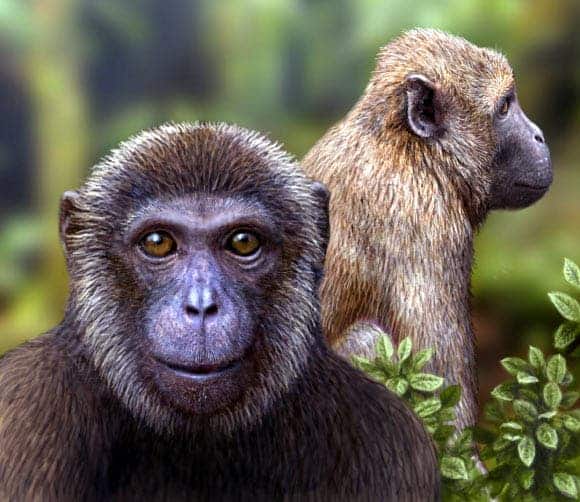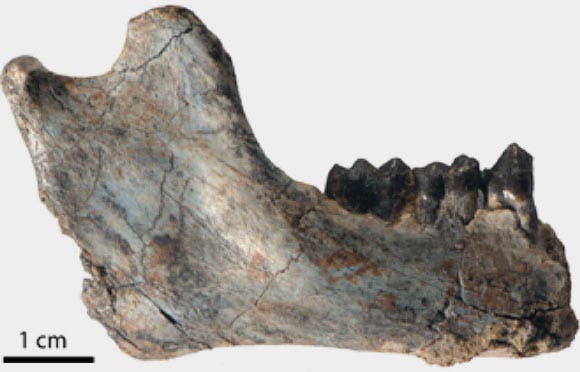Paleontologists working at Ohio University have unearthed evidence of two new species of ancient primates, named Rukwapithecus fleaglei and Nsungwepithecus gunnellifa, which offer solid evidence of a split between Old World monkeys and apes.

Geological and paleontological analysis have shown that the fossils are approximately 25 million years old, which puts them in the late Oligocene. The Oligocene is a very important period in terms of fauna, lots of important and significant species emerge at that time. It’s also a crucial period for primates, who begin to differentiate and expand.
Why are these fossils relevant, and very important? Well, they are much older than previously documented for either of two major groups of primates: the group that today includes apes and humans (hominoids), and the group that includes Old World monkeys such as baboons and macaques (cercopithecoids). We really don’t know that much about the origins of early anthropoid splits. Anthropoids include Platyrrhines (New world Monkeys) and Catarrhines: us, the other great apes, lesser apes (gibbons), and Old World Monkeys (think baboons). Why don’t we know that much about them? Because we didn’t really find that many fossils which could shed some light on the issue.
“The late Oligocene is among the least sampled intervals in primate evolutionary history, and the Rukwa field area provides a first glimpse of the animals that were alive at that time from Africa south of the equator,” said Prof Nancy Stevens, lead author of a paper reporting the discovery in the journal Nature.

The fossils they found were a mandible preserving several teeth for Rukwapithecus fleaglei and a tooth and jaw fragment for Nsungwepithecus gunnelli. It may not seem like much, but the morphology of the mandible is a very good standard to determine species. The size and shape of the teeth, as well as the type of the bone can also give lots of indications about the size of the animal, what it ate, etc.
The study documents for the first time that the two lineages were already evolving separately during this geological period. Previous finds put this split a few million years later.
“The new discoveries are particularly important for helping to reconcile a long-standing disagreement between divergence time estimates derived from analyses of DNA sequences from living primates and those suggested by the primate fossil record,” Prof Stevens said.
“Studies of clock-like mutations in primate DNA have indicated that the split between apes and Old World monkeys occurred between 30 million and 25 million years ago. Fossils from the Rukwa Rift Basin in southwestern Tanzania provide the first real test of the hypothesis that these groups diverged so early, by revealing a novel glimpse into this late Oligocene terrestrial ecosystem.”
Via Sci News.


